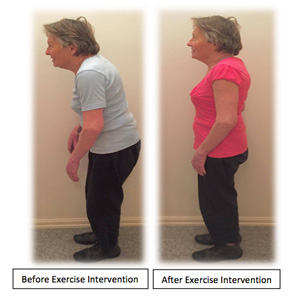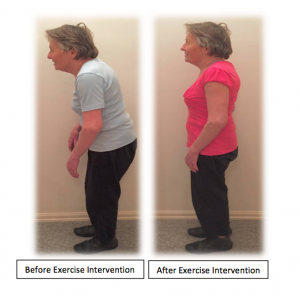
Statistics show that falls occur in 1 in 3 people aged over 65, and 1 in 2 people aged over 90. Hospital admissions from falls is particularly common in people aged 65 years and older, which is 3.5 times as many admissions as a result of a fall compared with people aged 45-64. A number of factors can increase an individual’s risk of falls including restricted mobility, postural instability leading to changes in centre of gravity, orthopaedic problems, lower limb muscle weakness, poor balance and poor proprioception.
It is common for people who experience balance difficulties and/or a fall to reduce or avoid activities through fear of falling. Unfortunately reducing activity levels leads to a further reduction in muscle strength contributing to postural imbalances, decreases in joint range of movement, and a decrease in stability, which makes a person even more likely to experience another fall.
The good news is your risk of falling can be greatly reduced through exercise interventions following a balance and postural assessment. Exercise interventions focus on functional training with the aim of improving muscular strength, increasing joint range of movement and correcting any postural abnormalities. Exercise interventions are effective in the prevention of falls, and can also be applied following a fall to reduce the risk of further falls and injuries. If you have concerns about your posture or balance, speak with your GP about a possible referral to an Accredited Exercise Physiologist for an assessment and management plan.
https://www.rehabtraining.com.au/
References:
Australian Institute of Health and Welfare. (2012). Falls in Older People. Retrieved September 9, 2016, from https://www.aihw.gov.au/injury/falls/.
Palmer, E., & Watkins, L. (2016). Clinical Review Falls in Older Adults. CINAHL Rehabilitation Guide. Glendale, CA: Cinahl Information Systems.
Prentice, W. (2004). Rehabilitation Techniques for Sports Medicine and Athletic Training (4th ed.). New York: McGraw-Hill.
Written by Emma Sansalone (Accredited Exercise Physiologist)

